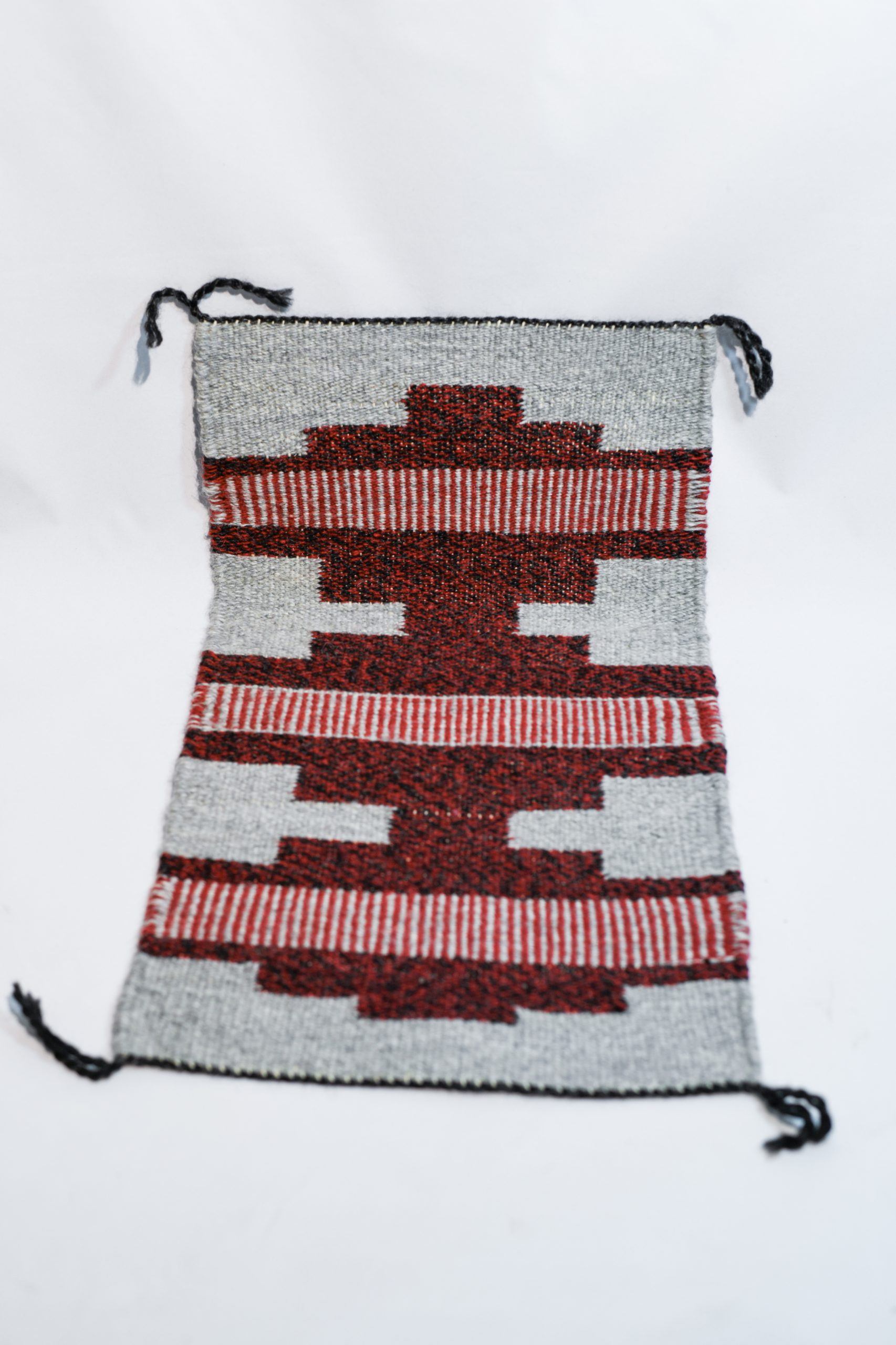Some information may be outdated.
This article is part of a series exploring items in the Moab Museum’s collection.
Weaving has long been a flourishing tradition of the Navajo (Diné) people, persisting in the face of changing times and adversity. Around the 17th century, the Navajo acquired Churra sheep from the Spanish, the first domesticated sheep in North America, and developed them into a breed called the Navajo-Churro. The sheep and wool have been symbolically intertwined with Diné spirituality and identity since.
In addition to being well-suited to the arid climate of the Colorado Plateau where the Navajo have managed their flocks for over 350 years, these sheep retain several unique characteristics. Notably, wool from the Navajo-Churro comes in light, natural colors and is very high in luster, a quality prized by hand spinners utilizing traditional Navajo techniques.
Throughout the 19th and 20th centuries, a series of Federal government actions and policies almost led to the total eradication of the Navajo-Churro breed; In essence, disrupting a highly-valued means of Navajo sustenance. Colonel Kit Carson was responsible for waging a war against the Navajo and removing thousands from the Four Corners area to southeastern New Mexico. Beginning in 1863, Carson, along with 700 troops, moved into the Navajo Nation with the intention of systematically destroying the Navajo livelihood. These troops destroyed agriculture, land, and targeted the Navajo-Churro, ultimately relocating many Navajo to Fort Sumner, NM.
By the 1970s, only about 450 of the original Navajo-Churro sheep existed on the entire Navajo Nation, with only a few existing elsewhere. However, sheep-industry expert Dr. Lyle McNeal out of Utah State University began a foundation flock, recognizing the genetic and cultural significance of the Navajo-Churro, in an attempt to revive the breed. Under the Navajo Sheep Project, the resuscitation of the Navajo-Churro was successful and there are over 5,000 sheep registered with the Navajo-Churro Sheep Association, meaning the products and practices from the sheep can continue today.
This wool sash belt style weaving, made by Lillian Sam, was created as part of the Adopt a Native Elder program in 2010, which seeks to “help reduce extreme poverty and hardship facing traditional Elders living on the Navajo Reservation.” This weaving is a tribute and testament to Navajo resilience. As Native American Heritage Month concludes, the Moab Museum remains dedicated to sharing Indigenous stories. We do this through fostering a space where all people may share their stories and traditions and preserving symbols of the history of this landscape beyond Euro-American settlement.
The Moab Museum is dedicated to sharing stories of the natural and human history of the Moab area. To explore more of Moab’s stories and artifacts, find out about upcoming programs, and become a Member, visit www.moabmuseum.org.
Appreciate the coverage? Help keep local news alive.
Chip in to support the Moab Sun News.





